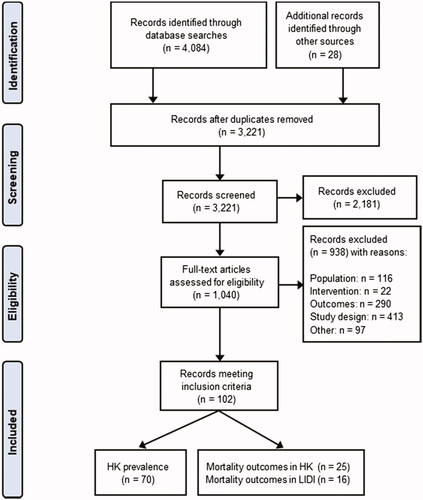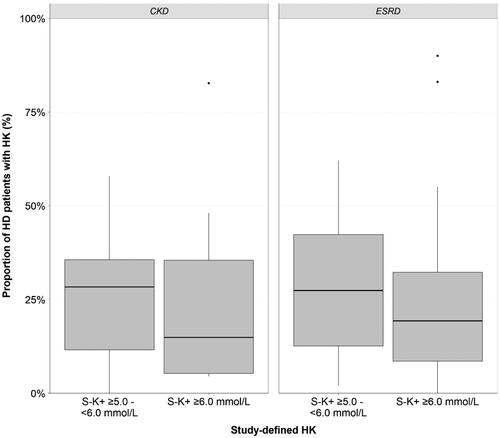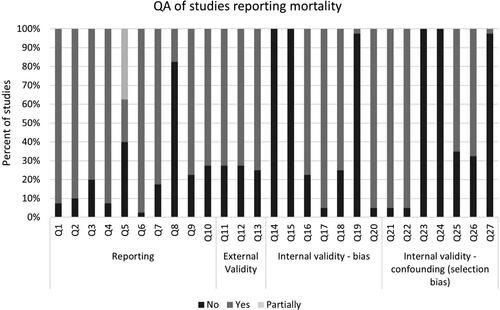Figures & data
Table 1. Eligibility criteria for the identification of studies describing HK and LIDI in HD patients.
Table 2. Summary of patient characteristics and outcomes in studies reporting frequency of HK in HD patients stratified by population.
Table 3. Studies reporting mortality due to HK in patients receiving HD (n = 12).
Table 4. Studies reporting an association between HK and the inter-dialytic period.



